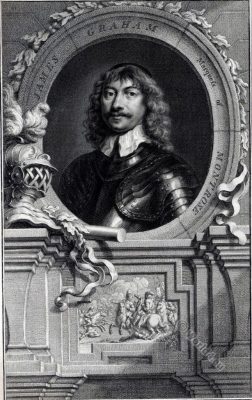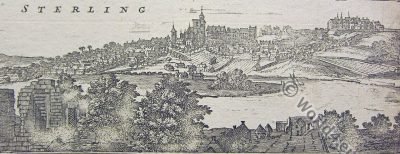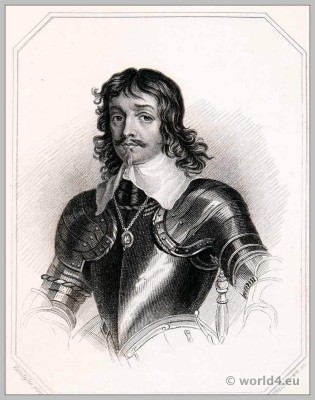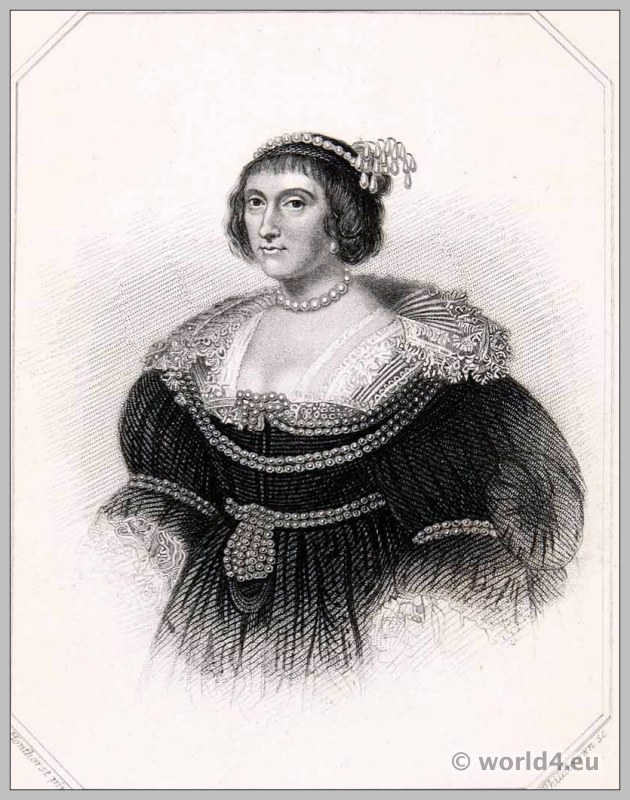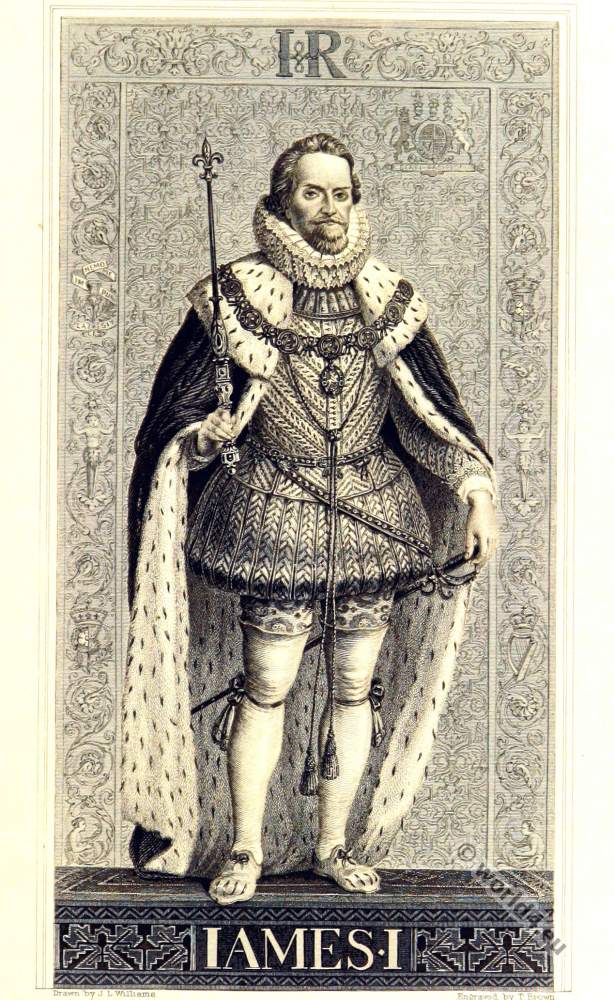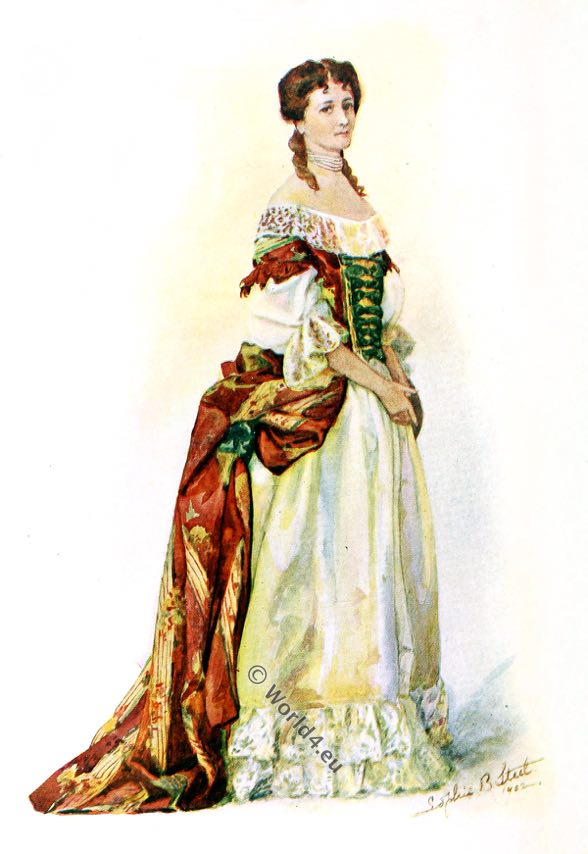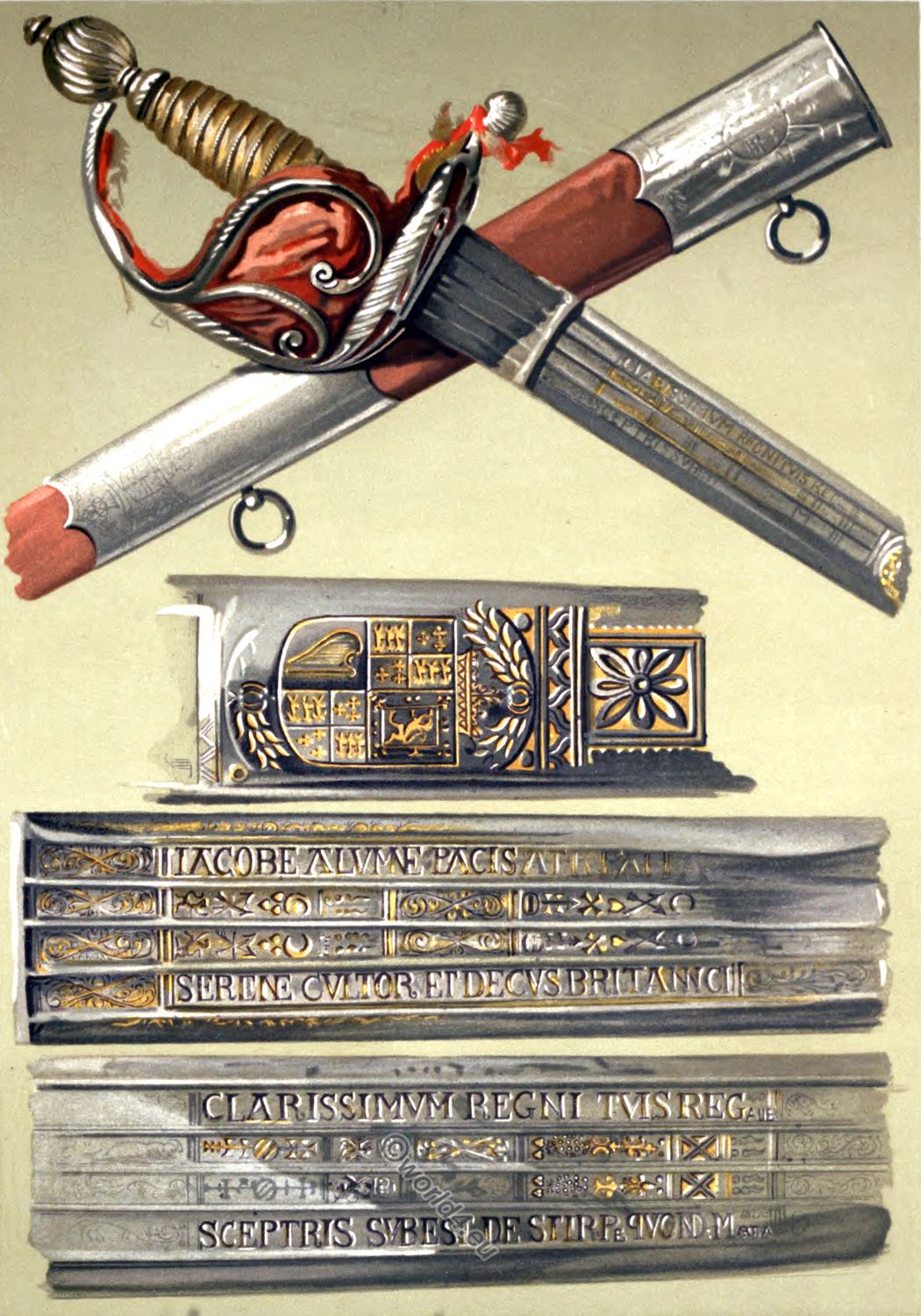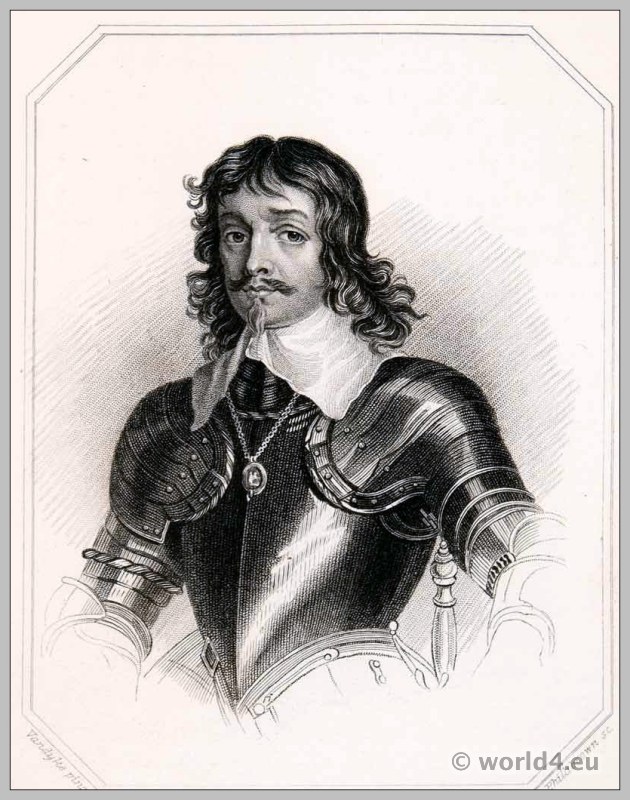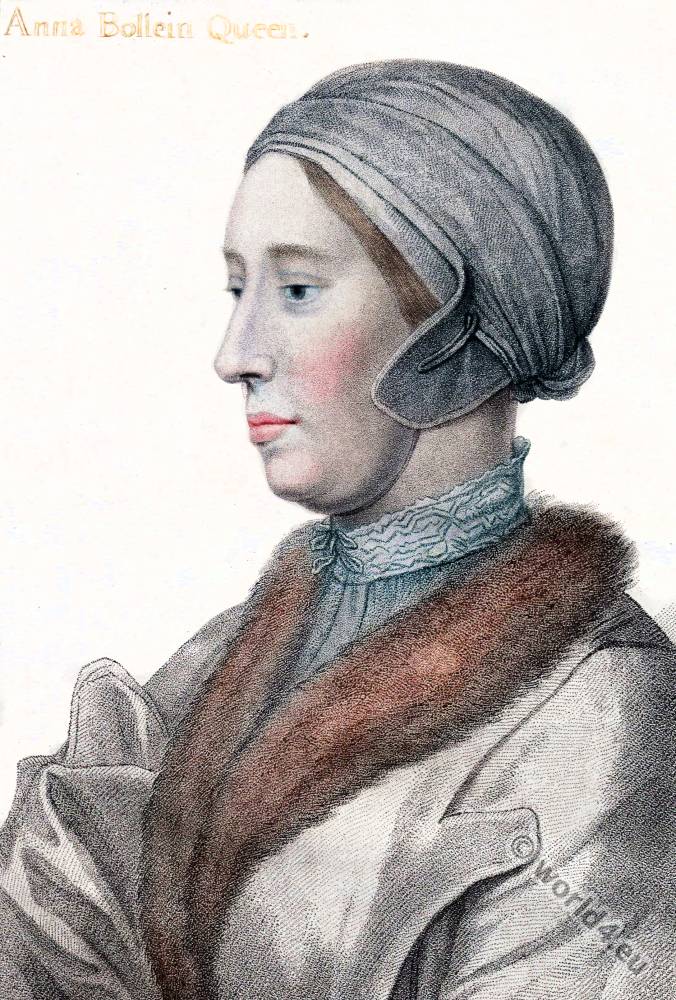The Execution of James Graham, 1. Marquess of Montrose.
James Graham, 1st Marquess of Montrose, (born probably in 1612 in Montrose, executed on May 21, 1650 in Edinburgh) was a Scottish nobleman who fought from 1644 to 1650 in the English Civil War in Scotland for the royal side.
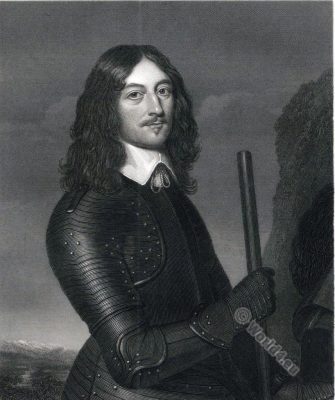
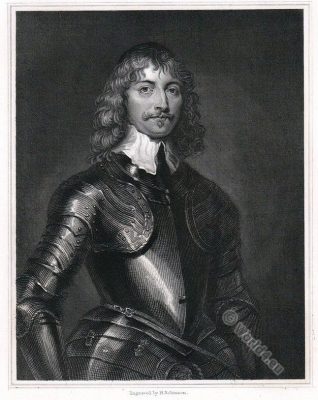
During the vicissitudes which accompanied the attempts of Charles I. to gain an advantage either by arms or by the art of playing upon the antipathies of the antagonistic Presbyterians and his English parliament, the Marquis of Montrose sustained a brief but an important position. It may be said that the successes of Montrose gave the king courage to refuse to make peace, even in opposition to the advice of the fiery Prince Rupert himself.

James Graham, Earl, and afterwards Marquis, of Montrose, was a brave, adroit, and unprincipled adventurer, who had been by turns courtier and Covenanter, and then again an adherent of the king. He had marched into London with Leslie’s army, and had been appointed by the Covenanters one of their commissioners to treat with the king at Ripon and York.
Charles induced him to betray his colleagues, and to continue to play the part of a zealous Covenanter while he was really devoting himself to the opposite cause. A letter in which Montrose agreed to this service was stolen from the king’s pocket, copied, and sent to the Covenanters. It was said that this was done by the Duke of Hamilton, who with John, Duke of Argyle was a powerful upholder of the Covenant. Montrose had time to accuse them both of treason before he was arrested and imprisoned in Edinburgh Castle with some of his adherents.

He was afterwards liberated, and with the men to whom both he and the king had been treacherously opposed, was raised to higher honors, so that he afterwards offered aid to the royal cause in conjunction with a similar adventurer, the Irish Earl of Antrim, who was to bring an army from Ireland while Montrose exerted his influence to cause a division in Scotland. Their schemes were not at first successful; but afterwards, when the Royalists had been beaten at the battle at Marston Moor; when the old Covenant had been succeeded by the new Solemn League and Covenant, which was all that the Scottish Commissioners could induce the Presbyterian Parliament to accept; when the king had heaped fresh insults on both parties; when the decisive battle of Nase by had been fought and won, and Charles was still holding out with weak obstinacy at Ragland Castle, Montrose who had penetrated into Scotland and had taken Dumfries, but had been compelled to retreat in the absence of a promised Irish army— again began to move.
He crossed the Border once more and hid in the Highlands till the arrival of 1200 Irish—a wild undisciplined force which joined 2000 Highlanders, as wild and badly armed as themselves.

John, Duke of Argyle (now lieutenant of the kingdom) and Lord Elcho marched against him from different points; but Montrose was too quick for them, and at once established a kind of guerilla warfare, in which his hardy, swift, but undisciplined troops were most successful. He defeated Elcho in Perthshire,and captured the town of Perth, which his followers so ruthlessly plundered that they grew rich enough to desert his standard and to return with their booty to the mountains.
The Irish contingent could not retreat, for Argyle had burned their ships. Montrose led them northward, hoping to be reinforced by the whole clan of the Gordons. Two thousand seven hundred men were posted at the Bridge of Dee to intercept him; but he crossed at a ford above that place, took his foes in the flank, and drove them before him into Aberdeen, which was made the scene of awful carnage, and was pillaged without mercy.
But Argyle was at his heels, and after two or three days the Highlanders and the Irish were obliged to abandon Aberdeen, whence Montrose led them northward to the Spey, still pursued by Argyle, and that so rapidly that they were obliged to bury their artillery in a morass and hurry along the right bank of the stream to the mountains at Badenoch. Thence they made repeated raids, waiting in vain for the great clans to join them.
Both forces were pretty nearly exhausted. The adherents of Montrose, worn out with rapid forced marches, left him with only his diminished Irish troops. The Covenanters went into winter quarters and “Argyle retired to rest to his castle at Inverary, at the head of Loch Fyne, where he hived himself securely, suffering no enemy to be within a hundred miles of him.” But when he suspected nothing less, the trembling cowherds came down from the hills and told Argyle the enemy was only two miles off. Montrose, enforced by clans of Highlanders, had braved the winter storms and snows and crossed moor and morass, laying the country waste as he went, till he was almost under the shadow of the old castle of Inveraray.
Argyle, who had set a price upon his head, had nothing to hope from his clemency, and only saved himself by crossing the loch in a fishing-boat. Then Montrose divided his army into three irregular columns, which carried fire and sword throughout Argyleshire and laid it utterly waste, slaying and sparing not. Having accomplished this they marched through Lome and Aber to Lochness to encounter the Earl of Seaforth; but learning that Argyle had gathered forces from the Lowlands, Montrose determined to engage him first, and so passing by an obscure way over the Lochaber hills he came upon him unawares, and on the next day a hand-to-hand conflict ended in the rout and pursuit of the Covenanters, of whom about 1500 were slain.
After this victory Montrose was joined by the Gordons and other clans, and so was enabled to break into Dundee, from which he retreated almost immediately before a large body of Covenanters, and again escaped to the mountains. Another victory, at a village near Nairn, where the slain on both sides amounted to 2000, raised the spirits of Charles, who made an attempt to push on his cavalry to meet the forces of Montrose, and had actually crossed the country from Hereford to Doncaster when the pursuit by Sir David Leslie with the entire body of Scottish cavalry then in England caused him to turn back.
Montrose crossed the Forth a little above Stirling, directing his march across the narrow isthmus which separates the Firth of Forth from the Firth of Clyde. Baillie and the Covenanters came up withhim at Kilsyth, but they were utterly defeated, losing all their artillery, arms, and ammunition. Argyle and “the chiefs of the party fled by sea to England. Glasgow opened its gates to Montrose and his wild and savage followers.”
Then there came an end to his victories; the Highland tribes who had joined him retired again to the mountains with their plunder. He had overrun and laid waste the country, but he held no positions nor had he secured any place in the Lowlands. He advanced southward expecting to meet a reinforcement of cavalry from England; but Charles was still uncertain, had lost Bristol, which had been surrendered by Prince Rupert, and after the defeat of the Royalists at Rowton Heath was compelled to retreat to Denbigh, where he subsequently learned that his northern ally had also lost his desperate game.
David Leslie, who advanced on the east coast of Scotland, had heard that Montrose was moving to the south-west, probably with the view of meeting Charles at the time that he had determined to unite the two armies. The Covenanter general, therefore, led his Scottish cavalry from the shores of the Forth to Solway Firth, and, taking a lesson from the frequent tactics of his opponent, fell suddenly upon the Royalists in Selkirk Forest, and so completely vanquished them that the army was destroyed, Montrose himself escaping to the Highlands, many of his principal adherents being either killed in battle or afterwards executed by the Covenanters.
After the execution of Charles I. the Independents declared that the proclamation of the Prince of Wales or any other to be king or chief magistrate would be punished as high treason. The Rump Parliament determined to bring some of the chief royalists to a speedy trial. On the 9th of March following the king’s death on the 30th of January, Duke Hamilton and the Lords Holland and Capel were beheaded in Palace Yard. The late king’s eldest son was proclaimed as Charles II both in Scotland and Ireland, and in August Cromwell, with his son-in-law Ireton, landed near Dublin in order to suppress the insurrection. Before the month of May in the following year (1650) the Papists and Royalists there were entirely subdued.
In Scotland a more determined effort was made to support the claims of Charles, and in the spring of the same year Montrose again made his appearance, crossing over from the Continent as the precursor of the prince, and landing at the Orkneys with a few hundred foreign soldiers. He disembarked at Caithness, intending once more to go to the Highlands and call his former followers to his aid; but the Presbyterians had had enough of him and were on the alert. The Committee of Estates had appointed Strachan as their general, and though they were Royalists they regarded the guerilla chief as an enemy.
Montrose had scarcely gone beyond the pass of Invercarron when Strachan fell upon him and completely defeated him, so that he could only escape for his life, leaving behind cloak, star, sword, and the garter which had just been bestowed upon him. He was taken at last through the treachery of an old friend with whom he sought an asylum, but who shamefully betrayed him to the Covenanters.
Bound with ropes like a wild beast he was conveyed to Edinburgh, where, on a former attainder, sentence of death was speedily passed upon him, and he was hanged on a gallows 40 feet high. Montrose was only thirty-eight years old when he thus came to the end of a career, which, for courage and adroitness in war, might have gained for him the highest honors had it been regulated by the considerations which influence the conduct of noble men even if they are engaged in a mistaken cause.
Later his head and limbs were removed and placed in the top five cities in the country to show. After the restoration of Charles II he received a state funeral as his most faithful followers. In addition to his military merits James Graham was a recognized poet whose most famous line “Hey Either fears his fate too much, Or his deserts are small, did puts it not unto the touch To win or lose it all,” for example by Field Marshal Montgomery at eve of D-Day was quoted.
Source: “Pictures and Royal Portraits illustrative of English and Scottish History. From the introduction of Christianity to the Present time.” Author: Thomas Archer. Published in London, 1878 by Blackie & Son.
Related
Discover more from World4 Costume Culture History
Subscribe to get the latest posts sent to your email.


